Sap on citrus leaves, but no insects
diekle
12 years ago
Featured Answer
Comments (21)
diekle
12 years agocitrange2
12 years agoRelated Discussions
Citrus Plant Sticky Leaves
Comments (12)Yep. That is Brown Scale, or Brown Soft Scale, or Soft Brown Scale, a very common scale insect. The tan insects that are visible are the older ones, and the almost transparent insects are usually males, but they can just be immature females. All of the ones I can see in the pictures have already settled down and won't move on their own: they have settled in to suck the juices out of the leaves and stems. Eventually, as they age, the females will turn a dark brown color and be more rounded: that is about the time they give birth to little baby scale insects. Not visible in your pictures, but possibly present, are the little tiny ones, which are still mobile. (If you only had a single breeding female scale on one tree to begin with, the scale insects you see may be the only ones). If the little crawlers are present, they will move to a spot they like, and then settle down and do what the adults do. Normally, scale insects don't cause much of a problem when you put healthy citrus trees outside for the summer, since the outdoor environment is not conducive to their spreading, but if you put trees with an infestation outside you are possibly going to have a problem. Indoors, because of the dry air and steady temperatures, a few scale insects can very quickly become a serious problem. Left unchecked, they can weaken and eventually kill a tree. My preferred method of control is two-fold if the plant is small enough and the infestation is not too overwhelming. First, I like to rub the little buggers out with my finger or a pencil point. In particular, I look for any particularly large and rounded scale, since these are the ones that are going to produce the nymphs (they may already be under the large adult). Disturbing the adult insects doesn't take much pressure. It may not be necessary, but the insects have a waxy coating, and I think it probably makes it easier for the next step to work. I don't rub the scale insects before the second dose. The second step: spray with a horticultural oil spray twice, at an interval of about 7 to 10 days. Another way to go would be to use something like Neem oil extract, but I have not tried that. The Horticultural Oil route is nice because it is easy to mix up a quart of the solution, spray the tree or trees, let them drip dry, and then bring them back inside. The brand I picked up at the local nursery has no odor and can be used up to the day of harvest. I'd say that most of them on the market are the same, so I wouldn't worry too much about that. So, I would spray the trees twice, 7 to 10 days apart, and the problem should go away for the summer. Make sure you spray the tops and bottoms of all the leaves, and the branches and trunk. Make sure the trees aren't in need of water before you spray them. If they are, water them, and wait a day before spraying. Then, in the fall, I would spray twice again shortly before they come back inside. Even with this regime, it is still possible that they will show up again around December-March, since it really only takes one of them to start another infestation. I've sprayed some of my trees each winter (usually just once) at some point or other when I see the insects. This year they showed up on three of my trees. I just pick a warmish day (temperatures above freezing, sunny, no wind), spray them, and then put them on the unheated porch to drip dry. They are only outside for 10 to 15 minutes, tops. The goal in this case is not to eliminate all the insects, but to reduce their numbers enough that the problem is insignificant for the rest of the indoor season....See MoreBayer Advanced Fruit, Citrus & Vegetable Insect Control?
Comments (30)Some time has passed since anyone has posted on this, but I used the Bayer Advanced product for fruit trees (apple in my case) - in about May of 2013 on 3 apple trees. Now that harvest time is here, my apples are bigger and less diseased then I've ever seen them. The trees are very old - over 50 years and not much has been done to them except the last few years - slight pruning and a little one-time application of this or a similar product - and sometimes a lime sprinkling. Anyway, I am now so concerned about having used this product that I'm looking for comments from anyone else who has. I called the company a couple of weeks ago and was told that the amount of Imidacloprid used in the product is so small that it will not affect the fruit in terms of it's 'edibleness'. OK - so I picked several bushels of apples and started making pies, etc. I did eat some - raw and cooked and this past week my tongue has been kind of numb. It is possible that I burned it or overbrushed it but am not sure. I'm wondering if anyone else has used this and had anything similar. I'm just trying to figure out if it could at all be related to the Imidacloprid in the apples. I really hope that is not the case. Others have eaten a few slices of pies and are not having any reactions so I'm probably just being paranoid. My trees are huge and I used less than what the recommended amount was - but reading all the different posts - I thought I'd resurface this and ask some follow-up questions. (Had tons of bees on them this year and used the product after flowers were all off). As I'm about to hit 'submit' - I'm realizing that my daughter's friend gets a numb tongue from apples - maybe its in a lot of the apples we eat and children would be more 'allergic' / sensitive to this .... ? food for thought....See MoreCitrus yellow/narrow/curly leaves, immature fruit drop
Comments (14)Hi Patty, always a pleasure to hear your input. - thank you! The Gold Nuggets pictured are from Four Winds and so i believe on Cuban Shaddock. The Clementines are on Carrizo. The symptoms of too little water can be similar to too much. Essentially, the roots are not functioning properly. I initially thought my issues were related to too much water and phytophthora, but by pulling the GN and later the Clem, i discovered 1/2 the roots with a bit of moisture and the other half bone dry. [the Clem had an additional issue - neighboring tree root encroachment that was taking up the resources]. One of the GN's and both Clems were in the ground, in fill clay, and on a significant slope - so no drainage issue. Pulling that GN out of the ground and allowing it to enjoy constant moisture, food and water brought it back. Moving one of the Clems to another location with water pH of 7.1 and watching it respond gave me that "aha". A key point here is to try your best to asses your specific situation and feed/water/fix accordingly. And BTW, I would like to add that I still leaf-read, but its only one data point! I have noticed that Citrus leaves show evidence of their environment anywhere from 1-7 days [drought tends show more quickly]. If you adjust for something that you see the leaves showing you, it can set you up for some very wild swings in care.... the leaves might be telling you what happened last week!. - Golf is easier because your shot gives you instant feedback! [comments always welcome - just not about my golf game please] Best of Luck - George [edited to correct rootstock-sorry for any confusion] This post was edited by Becauseican on Thu, Jul 17, 14 at 15:43...See MoreKnow of an insect that leaves sap on the rose bud it eats?
Comments (9)Dan, Caterpillars make frass, too. Whatever the insect (I immediately said grasshopper because they have powerful mouth parts, and the time of year is right), those little drawstring organza bags can be very effective. They come in different sizes. If you get a 6" x 8" size, or thereabout, the bloom can open in it. Then remove the bag. Remove it any time before a bloom opens, and some determined insect may get to it. Even after it opens, insects don't stop, but at least the flower got a chance to bloom! The organza bags are quite cheap on Amazon, but make sure you order from a US company, or it may take a month or more coming from China. Moses...See Morebirdsnblooms
12 years agorhizo_1 (North AL) zone 7
12 years agodiekle
12 years agocitrange2
12 years agodiekle
12 years agotmc2009
12 years agorhizo_1 (North AL) zone 7
12 years agotmc2009
12 years agotobybul2 - Zone 6 SW MI
10 years agopuglvr1
10 years agotobybul2 - Zone 6 SW MI
9 years agotobybul2 - Zone 6 SW MI
9 years agoDolores Haraden
6 years agolast modified: 6 years agotobybul2 - Zone 6 SW MI
6 years agoDolores Haraden
6 years agoEmily Jenkins
5 years agojaydub83
5 years agoVladimir (Zone 5b Massachusetts)
5 years ago
Related Stories

GARDENING GUIDESHow to Keep Your Citrus Trees Well Fed and Healthy
Ripe for some citrus fertilizer know-how? This mini guide will help your lemon, orange and grapefruit trees flourish
Full Story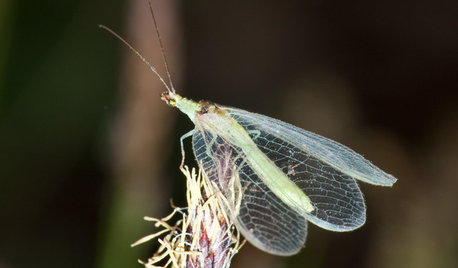
GARDENING GUIDESLook Out for Lacewings: Beneficial Insects Coming to a Garden Near You
Lacewings are delicate insects that produce alligator-like, hungry offspring that devour aphids and other garden pests
Full Story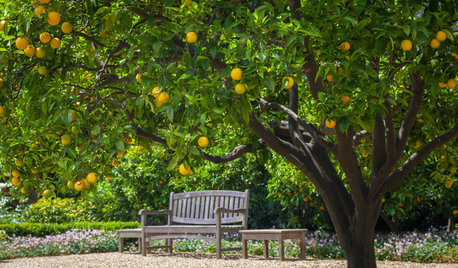
GARDENING GUIDESSpring Citrus Care Reaps Months of Sweet Rewards
Learn how to tend citrus trees in spring and ways to preserve their delicious fruit
Full Story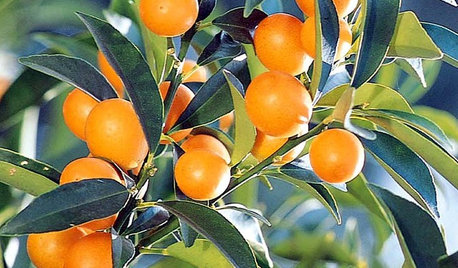
GARDENING GUIDESGreat Design Plant: Kumquats for a Juiced-Up Winter
Grow it for the edible fruit or its good looks alone. This citrus cousin will brighten any gray winter day
Full Story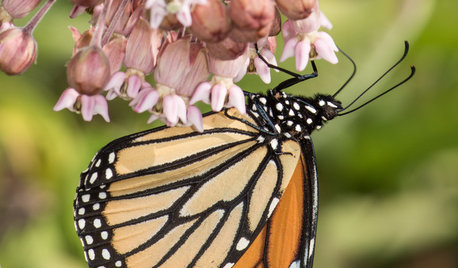
FLOWERS AND PLANTSHelp Monarchs and Other Butterflies by Planting Common Milkweed
Summer-blooming Asclepias syriaca is an important larval host plant for the monarch butterfly and attracts a number of pollinating insects
Full Story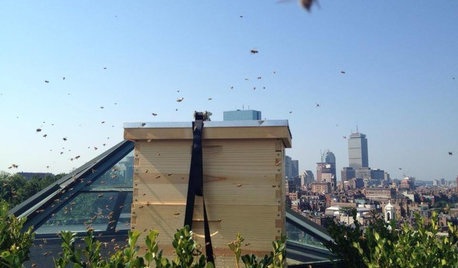
FARM YOUR YARDHello, Honey: Beekeeping Anywhere for Fun, Food and Good Deeds
We need pollinators, and they increasingly need us too. Here, why and how to be a bee friend
Full Story
DECORATING GUIDESGo for a Greenhouse Effect With an Exotic Conservatory
Cultivate a rarified hothouse feel with or without all-glass walls; these inspiration photos and product picks show you how
Full Story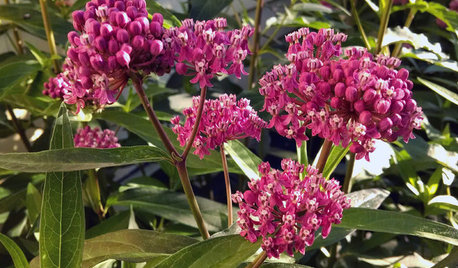
GARDENING GUIDESOh, Deer! 10 Native Flowers That Stand Up to the Herds
Keeping a garden amid hungry deer can be hard, but these plants should fare well
Full Story
EDIBLE GARDENSA Formerly Weedy Lot Now Brims With Edibles and Honeybees
Photographers transform their barren backyard into an oasis filled with fruit, vegetables, honey, eggs and more
Full Story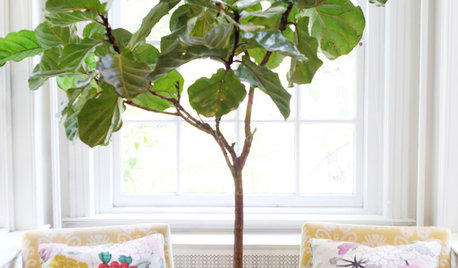
HOUSEPLANTSPlay Up Some Fiddleleaf Figs for a Lively Indoor Tune
Strike a dramatic chord in a minimalist scene or a country note in a rustic setting — fiddleleaf fig plants harmonize with any style
Full StorySponsored
Columbus Area's Luxury Design Build Firm | 17x Best of Houzz Winner!




birdsnblooms